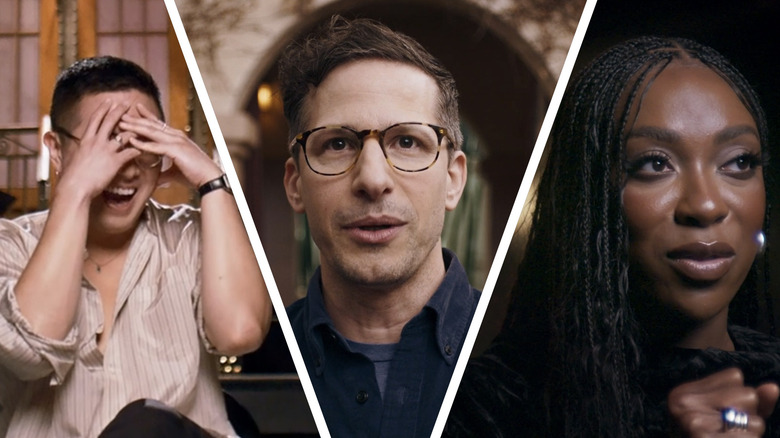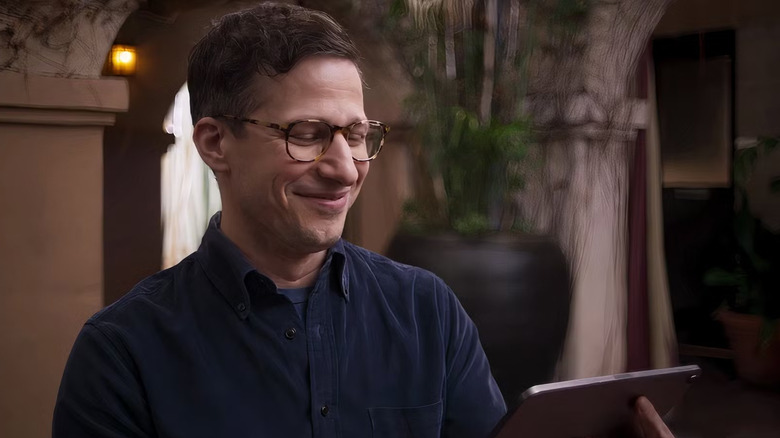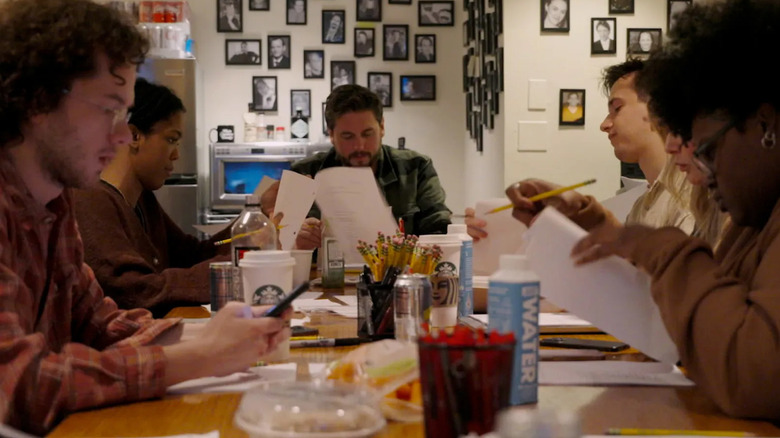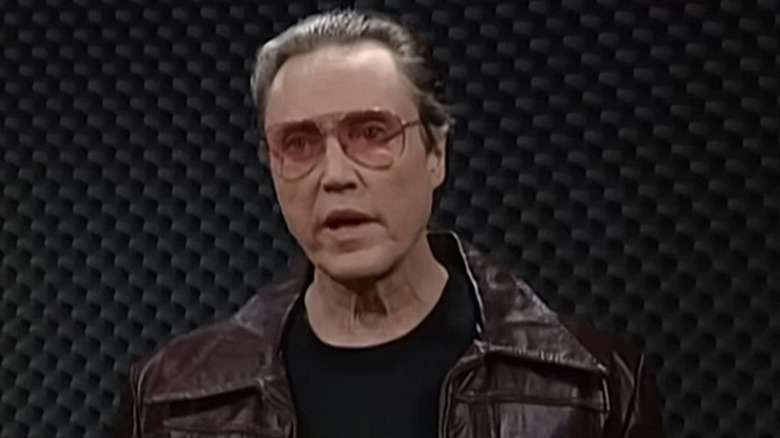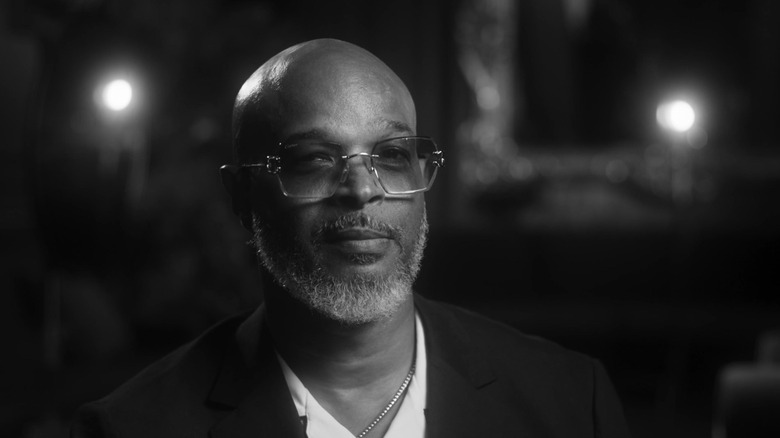The New SNL Documentary Series Proves Why The Legendary Show Is Truly Immortal
In the various conversations about pop culture you've had in your life, there's a good chance you've heard someone confidently say something like, "I miss when 'Saturday Night Live' used to be funny," or maybe, "'SNL' isn't as good as when [insert their favorite cast members] was on the show." There's an equally good chance that this person probably saw a couple rough sketches in an episode they happened to catch on a random Saturday and used that as the basis for their argument, comparing it to the sketches they've loved for years that have stood the test of time.
But the reality is that "SNL" has always been simultaneously outstanding and bad throughout its entire run, which is a big part of why it has endured 50 years on the air and counting. More importantly, "SNL" remains a comedy institution that, at its best, brings a strange new character, infectious catchphrase, or hilarious moment into the pop culture zeitgeist. But even when "SNL" is at its worst, whether it's because of a host struggling with live television or a roster of exhausted writers and cast members pushed to the brink of their mental health for every new episode, it's still incredibly interesting, largely because it's a miracle that this show actually comes together each week. Now, a new documentary series on Peacock illustrates how that happens.
"SNL 50: Beyond Saturday Night" is a new four-episode docuseries executive produced by Morgan Neville (director of docs like "20 Feet from Stardom" and the touching Mr. Rogers profile "Won't You Be My Neighbor?"), where each episode acts as a standalone documentary that digs deeper into a specific element of "SNL." In their own unique way, each episode reveals why "SNL" has been running for 50 years, despite several brushes with death.
Five minutes to become part of TV history
"Five Minutes" is the first episode of the new "SNL" docuseries on Peacock, and it's perhaps the most logical place to begin. This segment focuses on the audition process for "SNL," speaking with a cavalcade of cast members, both former and current, about how they landed one of the most coveted gigs in comedy. Across the board, you'll find that (almost) everyone gets five minutes to prove that they have what it takes to become part of the cast of "SNL." In that five minutes, creator, executive producer, and showrunner Lorne Michaels, as well as key members of the crew, observe an assembly of impressions and original characters, as well as some stand-up comedy, depending on who is auditioning and what their strengths are.
As many of the cast members attest in the documentary, coming up with five minutes of material that will impress the people at "SNL" is a nerve-racking endeavor, and actually performing that tiny window of comedy is even more challenging, especially since there is typically almost zero laughter from those observing. From the get-go, the pressure is on to deliver, and you get almost no confirmation of whether or not you're succeeding. It's just the first unsettling step into what has the potential to be the most stressful job any comedian will ever have (more on that in the next episode). As the episode reveals, there are plenty who never even got that opportunity, with audition reels of Jim Carrey, Jennifer Coolidge, Kevin Hart, Stephen Colbert, and more showing that even some of the most skilled comedians didn't make the cut.
But perhaps the best part of this episode is watching several of the cast members as they take a glimpse at their own auditions, many of which they're seeing for the first time. Plenty of embarrassment comes, especially for players like Amy Poehler and Bowen Yang, who can barely endure watching themselves. Meanwhile, Tracy Morgan confidently chuckles at himself while reflecting on his audition, and Heidi Gardner gets tearful after admitting that she was worried about being retroactively critical of herself.
What this episode reveals is the intense selection process that weeds out the best of the best for a very specific kind of job. Just because a comedian doesn't get "SNL" doesn't mean they won't succeed, but this episode shows that "SNL" meticulously picks the talents that will work best for this unique production, and then it's up to them to make a meal out of it.
Every week at SNL is a gauntlet run
For those who might be unaware, "SNL" is written and produced in a single week. That means pretty much all the sets and costumes you're seeing in each sketch were created that week, unless there's something reused for a recurring sketch. When you consider the production quality for each sketch, whether it's live or pre-taped (such as the SNL Digital Shorts, commercial parodies, or Please Don't Destroy videos), that should be enough to put you in awe of the mere existence of "SNL." If that's somehow not the case, this episode of "SNL 50: Beyond Saturday Night" will give you a whole new appreciation.
The cast of "SNL" gets all the glory, and while they all also work as writers on the show, some of them wouldn't have anything to perform if it wasn't for the dedicated staff of scribes whose sole job is to come up with fresh sketch comedy for every new episode. The writers almost never get the credit they so rightfully deserve, so having this episode, titled "Written By: A Week Inside The SNL Writers Room," feels like the best way to honor them. On top of that, when it comes to the writers' responsibilities at "SNL," it shows just how daunting and exhausting being a writer can be on the show. In fact, the role of the writer on "SNL" is much more intense and involved than being a writer on any other series.
Even as an "SNL" die-hard, I didn't realize until I saw this episode that the writers essentially act as the directors of the sketches they write, too. They consult with both the costume and set departments to ensure they're getting what they need for the sketch to be executed according to their vision. On top of that, the writers also must meet with the director in the control room to determine where cameras need to be and when the screen cuts to the various characters and elements of the sketch. Even for the pre-tapes, the writers are in the editing room overseeing cuts of the sketches.
So the writer's job, which includes constantly revising and updating the script, even during the airing of an episode, involves so much more responsibility. Former "SNL" writer and frequent host John Mulaney even incredulously notes how wild it is that in any given sketch, a group of twentysomethings is solely responsible for a few minutes of network television, and the network itself doesn't have much of a say about it, simply because Lorne Michaels is in charge. That just goes to show you how strong the legacy of "SNL" is and how much power Lorne Michaels has as the showrunner.
The only prescription is more cowbell
It's no secret that there are some genuine comedy duds in any given episode of "SNL." That's part of what makes the show's greatest sketches true gems. One of the most memorable sketches takes the spotlight in "More Cowbell," the third episode of this docuseries. With a more playful tone, the episode digs into a singular sketch from the 18th episode of the 25th season of "SNL" on April 8, 2000. In case the title didn't give it away, it's the famous sketch where Will Ferrell is the man responsible for playing the cowbell in Blue Oyster Cult's classic rock song "(Don't Fear) The Reaper." But the sketch's most memorable turn comes from Christopher Walken (one of the show's best recurring hosts), playing producer Bruce Dickinson, who says the memorable line, "I've got a fever, and the only prescription is more cowbell," as only Walken's signature cadence can deliver.
Not only are there fascinating revelations to be had about the sketch, such as how neither the cowbell nor Christopher Walken were originally going to be part of the sketch, but there are added layers about the cowbell as an instrument, how it ended up in the actual song, and how the legacy of the sketch has impacted everyone involved, including Blue Oyster Cult and the company who manufactured the cowbell used in the sketch.
This episode illustrates how a silly little sketch written and produced in a week, one that was almost doomed from the start by being placed in one of the worst locations in Studio 8H of 30 Rockefeller Center, can become a shockwave in pop culture that comes to define an era of "SNL." Few shows are able to manufacture such impactful moments in entertainment history, but "SNL" has been doing it for five decades, and that's nothing to scoff at.
SNL always figures it out along the way
Finally, the last episode of the docuseries focuses on a single season, largely considered to be one of the worst and most infamous. In "Season 11: The Weird Year," we take a retrospective look back at the first season in which Lorne Michaels returned to "SNL" after departing the series in 1980. After being absent for five years, Michaels returned in an effort to bring "SNL" back from the brink of cancellation. If Michaels hadn't come back to the show he created, the show might have ended right then and there, but the producer took it upon himself to reinvent the series.
Michaels cleaned house by not bringing back any of the cast members from the previous season, opting for an entirely new cast of players that included "Vacation" franchise star Randy Quaid, future comedy superstar Damon Wayans, character actor Joan Cusack, comedian Jon Lovitz, Brat Pack staple Anthony Michael Hall, fellow high school movie favorite Robert Downey Jr., satirist Dennis Miller, newcomer Nora Dunn, Off-Broadway star Danitra Vance, and the show's first openly gay cast member, Terry Sweeney.
Despite having a fantastic assembly of talent, Michaels had trouble picking up any momentum upon his return. The sketches just weren't working, and the cast had a hard time falling into a groove. But this episode of the docuseries illustrates that even in the season that many consider to be one of the worst, there are still fascinating peaks and bold creative decisions. Jon Lovitz's recurring pathological liar character would spark one of the more famous catchphrases from that decade, "Yeah, that's the ticket!" Terry Sweeney inspired a generation of gay comedians. Damon Wayans went rogue and got himself fired. Even Francis Ford Coppola directed an entire meta episode of the series, and nothing like it would ever happen again.
And herein lies the true secret to the endurance of "SNL": The series is always evolving, not because it wants to, but because it has to, and they never let failure stop them from trying again the next week. If the show had died after or even before season 11, think of all the hilarious moments that we'd be denied. How many of its breakout stars might have remained undiscovered? The series adapts to the times and the potential of the cast members it brings into the spotlight. There's nothing else like it on television, and there likely never will be.
If you enjoyed all of this waxing about "SNL," you should listen to our episode of The /Film Daily Podcast featuring "SNL 50: Beyond Saturday Night" executive producer Morgan Neville talking about the making of the docuseries:
You can subscribe to /Film Daily on Apple Podcasts, Overcast, Spotify, or wherever you get your podcasts, and send your feedback, questions, comments, concerns, and mailbag topics to us at bpearson@slashfilm.com.
